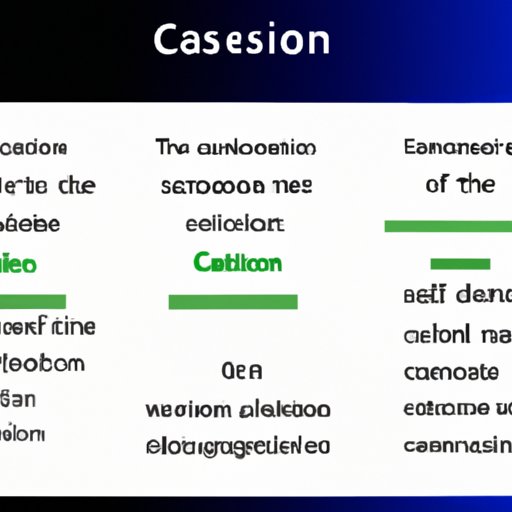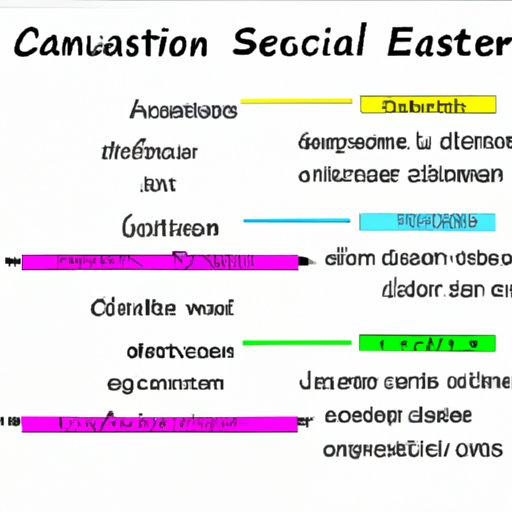Introduction
Classification in science is an organizational system that categorizes objects, organisms, or other items according to their similarities and differences. It is used in a variety of scientific fields, including biology, chemistry, physics, and astronomy, to help researchers better understand the natural world. Classification helps scientists identify patterns, draw conclusions, and make predictions about the behavior of systems and processes in the natural world.
Exploring the Basics of Classification in Science
What is Classification? Classification is the process of grouping things together based on their shared characteristics or properties. This process can be applied to any type of object, organism, or item, and it is used in many different areas of science. Classification is often used to group organisms into taxonomic groups, such as family, genus, and species. It is also used to categorize elements and compounds in chemistry, particles in physics, and stars and galaxies in astronomy.
Different Types of Classification: There are several different types of classification used in science, each with its own set of benefits. These include taxonomy, systematics, phenetics, and phylogenetics. Taxonomy is the process of organizing living things into categories based on their physical characteristics, while systematics is the study of the relationships between organisms. Phenetics focuses on the similarities between organisms, while phylogenetics is a more detailed approach that looks at the evolutionary history of organisms.
Benefits of Using Classification in Scientific Research: Classification helps scientists organize data, identify patterns, and draw conclusions. By grouping data into categories, researchers can quickly analyze the information and make predictions about the behavior of systems and processes in the natural world. Classification also allows scientists to communicate more effectively, as it provides a common language for talking about the objects and organisms in their field of study.

An Introduction to the Types and Uses of Classification in Science
Taxonomy: Taxonomy is the process of organizing living things into categories based on their physical characteristics. It was first developed by Swedish scientist Carl Linnaeus in the 18th century and has since become the standard method of classifying organisms. Taxonomy is used to classify and identify organisms, as well as to study their evolution and relationship to one another.
Systematics: Systematics is the study of the relationships between organisms. It involves looking at the similarities and differences between species and using this information to determine how they are related. Systematics is used to understand the evolutionary history of organisms and to identify new species.
Phenetics: Phenetics is a form of classification that focuses on the similarities between organisms. It is used to identify and classify organisms based on their physical or behavioral traits. Phenetics is a useful tool for determining the evolutionary relationships between organisms, but it does not take into account the evolutionary history of the organisms.
Phylogenetics: Phylogenetics is a more detailed approach to classification that looks at the evolutionary history of organisms. It is used to identify and classify organisms based on their evolutionary relationships and to understand the history of life on Earth. Phylogenetics is a powerful tool for identifying new species and understanding the evolution of organisms.
The Benefits of Using Classification in Scientific Research
Increased Efficiency: Classification helps scientists organize data and quickly identify patterns and trends. By grouping data into categories, researchers can more easily analyze the information and draw conclusions. This saves time and makes research more efficient.
Improved Understanding: Classification is used to identify and classify organisms, elements, and compounds. This helps scientists better understand the natural world and make predictions about the behavior of systems and processes.
Facilitating Communication: Classification provides a common language for talking about the objects and organisms in a particular field of study. This makes it easier for researchers to communicate with each other and share ideas and discoveries.

A Guide to Understanding Classification in the Sciences
Classification in Biology: In biology, classification is used to identify and categorize organisms according to their physical characteristics. This helps scientists understand the evolutionary history of organisms and study their relationship to one another. Classification is also used to identify new species and develop conservation strategies.
Classification in Chemistry: In chemistry, classification is used to categorize elements and compounds. This helps scientists understand the behavior of elements and compounds and make predictions about their interactions with other substances. Classification is also used to identify and name new elements and compounds.
Classification in Physics: In physics, classification is used to group particles according to their properties. This helps scientists understand the behavior of particles and the structure of matter. Classification is also used to identify new particles and study their interactions with other particles.
Classification in Astronomy: In astronomy, classification is used to identify and categorize stars and galaxies. This helps scientists understand the structure and evolution of the universe. Classification is also used to identify new stars and galaxies and study their interactions with other celestial bodies.

How Classification is Used in Different Areas of Science
Biological Classification: Biological classification is used to identify and categorize organisms according to their physical characteristics. This helps scientists understand the evolutionary history of organisms and study their relationship to one another. Classification is also used to identify new species and develop conservation strategies.
Chemical Classification: Chemical classification is used to categorize elements and compounds according to their properties. This helps scientists understand the behavior of elements and compounds and make predictions about their interactions with other substances. Classification is also used to identify and name new elements and compounds.
Physical Classification: Physical classification is used to group particles according to their properties. This helps scientists understand the behavior of particles and the structure of matter. Classification is also used to identify new particles and study their interactions with other particles.
Astronomical Classification: Astronomical classification is used to identify and categorize stars and galaxies. This helps scientists understand the structure and evolution of the universe. Classification is also used to identify new stars and galaxies and study their interactions with other celestial bodies.
Conclusion
Classification in science is an essential tool for understanding the natural world. It helps scientists organize data, identify patterns, draw conclusions, and make predictions. Classification also allows scientists to communicate more effectively by providing a common language for talking about the objects and organisms in their field of study. Classification is used in a variety of scientific fields, including biology, chemistry, physics, and astronomy, and it has numerous benefits, including increased efficiency, improved understanding, and facilitating communication.
(Note: Is this article not meeting your expectations? Do you have knowledge or insights to share? Unlock new opportunities and expand your reach by joining our authors team. Click Registration to join us and share your expertise with our readers.)
